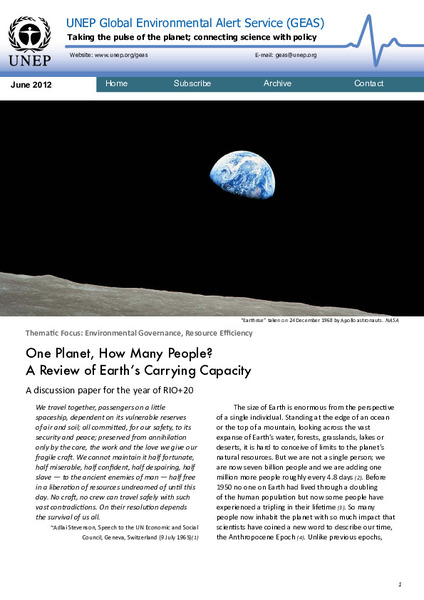| dc.contributor | Science Division | en_US |
| dc.contributor.author | United Nations Environment Programme | en_US |
| dc.coverage.spatial | Global | en_US |
| dc.date.accessioned | 2022-10-24T06:54:47Z | |
| dc.date.available | 2022-10-24T06:54:47Z | |
| dc.date.issued | 2012-06 | |
| dc.identifier.uri | https://wedocs.unep.org/20.500.11822/40937 | |
| dc.description | It is estimated that global population reached seven billion in late 2011 or early 2012. As global population has doubled since the 1960s, per capita GDP has grown to more than ten times what it was then. The human impact has grown to such a scale that it has become a major geophysical force. It is not surprising that concerns about the number of people the Earth can support have re-emerged recently. Attempts to define an upper limit of the number of people that the Earth could support are inevitably subject to considerable uncertainty, however, the greatest concentration estimates falls between 8 and 16 billion people — a range we are fast approaching. While there are many ways we might reduce our per capita impact on the planet, the collective impact will always be multiplied by global population, making population an issue which cannot be ignored. | en_US |
| dc.format | Text | en_US |
| dc.language | English | en_US |
| dc.relation.ispartof | UNEP Global Environmental Alert Service (GEAS) | en_US |
| dc.rights | Public | en_US |
| dc.subject | human population | en_US |
| dc.subject | population growth | en_US |
| dc.title | One Planet, How Many People? A Review of Earth’s Carrying Capacity - A Discussion Paper for the Year of RIO+20 - UNEP Global Environmental Alert Service (GEAS) June 2012 | en_US |


